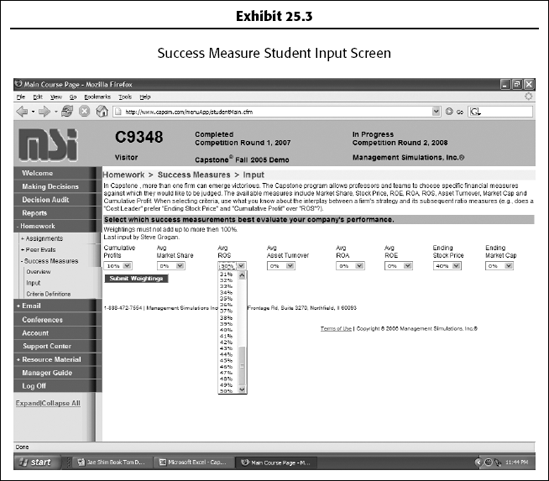25.3. Planning: Long-Range and Short-Term
After analyzing the external market scenario, students establish a strategic vision for their firm, and select a set of Success Measurements that stakeholders will use to evaluate their performance (Exhibit 25.3). Each team can choose from among eight performance measures: Profits, Market Share, ROS, Asset Turnover, ROA, ROE, Stock Price, and Market Capitalization.
After establishing a long -term strategic vision for the firm and identifying the optimal performance measures that link to their strategy, students must determine how to execute their strategy. Some of the tactical issues to be considered include:
Core Competencies and Competitive Advantage. What core competencies should the firm develop to successfully deliver on their strategy? For example, a high - tech market - focused differentiator might work to develop a competence around R&D, as that type of company will strive to offer state-of-the-art product designs. A low-tech market-focused cost leader, on the other hand, might be better served by focusing on production plant efficiencies to allow for reduced costs and lower prices.

Breadth of Product Offerings. How many brands should be offered, and how should they be positioned in the market? Great designs drive increased demand, but margins can suffer. Should volume be sacrificed for better rates of returns?
Pricing and Marketing ...
Get Budgeting Basics and Beyond now with the O’Reilly learning platform.
O’Reilly members experience books, live events, courses curated by job role, and more from O’Reilly and nearly 200 top publishers.

